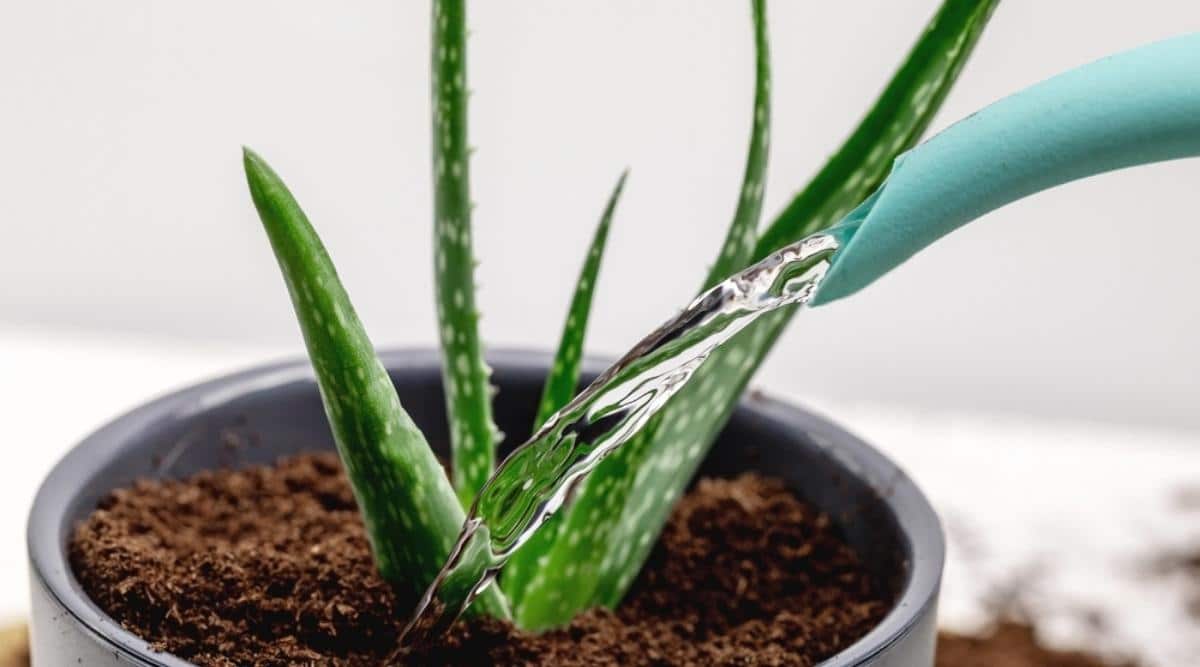
Aloe Vera, renowned for its succulent leaves and medicinal properties, is a popular addition to many households and gardens. Proper watering is crucial for maintaining the health and vitality of Aloe Vera plants, but there is often confusion regarding the most effective method. In this article, we’ll explore the debate over whether to water Aloe Vera from the top or bottom, considering the advantages, drawbacks, and best practices associated with each approach.
I. Introduction
Aloe Vera plants require regular watering to thrive, but improper watering techniques can lead to root rot, leaf discoloration, and other issues. While there are differing opinions on the best method for watering Aloe Vera, understanding the rationale behind each approach is essential for successful plant care.
II. Watering Aloe Vera from the Top
Benefits of Top Watering Top watering involves applying water directly to the soil surface around the base of the Aloe Vera plant. This method allows for efficient moisture uptake by the roots and ensures thorough hydration throughout the root zone. Additionally, top watering provides an opportunity to inspect the plant for signs of pests, diseases, or soil dryness.
Risks and Drawbacks Despite its benefits, top watering can increase the risk of overwatering and soil compaction, especially if done excessively or with heavy-handed watering. Watering the foliage rather than the soil can also increase the likelihood of fungal diseases and leaf rot, particularly in humid environments or when moisture remains trapped between leaves.
Best Practices for Top Watering To minimize the risks associated with top watering, it’s essential to water Aloe Vera plants sparingly and allow the soil to dry out partially between waterings. Use a watering can with a narrow spout to direct water precisely to the soil surface, avoiding contact with the leaves. Water early in the day to allow excess moisture to evaporate and reduce the risk of fungal growth.
III. Watering Aloe Vera from the Bottom
Advantages of Bottom Watering Bottom watering involves placing the Aloe Vera pot in a saucer or tray filled with water, allowing the plant to absorb moisture through the drainage holes in the pot’s bottom. This method promotes deeper root growth and prevents water from accumulating on the foliage, reducing the risk of fungal diseases and leaf rot.
Considerations for Effective Bottom Watering When bottom watering Aloe Vera, it’s essential to use a well-draining potting mix and ensure that excess water can drain freely from the saucer or tray. Avoid leaving the plant sitting in standing water for extended periods, as this can lead to waterlogged soil and root suffocation. Monitor soil moisture levels regularly and adjust watering frequency as needed based on environmental conditions.
Potential Pitfalls to Avoid While bottom watering offers several benefits, it’s not without its challenges. Over time, salts and mineral deposits can accumulate in the soil, potentially leading to nutrient imbalances and root damage. To prevent this, periodically flush the soil by top watering or repotting the plant with fresh soil. Additionally, bottom watering may not be suitable for all Aloe Vera cultivars or growing situations, so it’s essential to monitor the plant’s response and adjust watering methods accordingly.
IV. Choosing the Right Watering Method
Factors to Consider When deciding whether to water Aloe Vera from the top or bottom, consider factors such as the plant’s size, growing environment, and individual needs. Some Aloe Vera varieties may prefer one watering method over the other, so it’s essential to experiment and observe how the plant responds to different approaches.
Tailoring Watering Approach to Individual Needs No two Aloe Vera plants are exactly alike, so it’s essential to tailor the watering approach to each plant’s specific requirements. Factors such as soil type, pot size, and environmental conditions can influence how often and how much water a plant needs. Pay attention to the plant’s growth rate, leaf color, and overall health to determine whether adjustments to watering are necessary.
Monitoring Plant Response and Adjusting Watering Technique Regular monitoring is key to successful Aloe Vera care, regardless of the chosen watering method. Keep an eye on soil moisture levels, leaf appearance, and overall plant vitality to gauge whether the current watering approach is meeting the plant’s needs. Be prepared to adjust watering frequency, method, or volume as needed to ensure optimal health and growth.
V. Conclusion
In conclusion, the debate over whether to water Aloe Vera from the top or bottom ultimately comes down to individual preferences and plant care practices. Both methods have their advantages and drawbacks, and the best approach may vary depending on factors such as plant size, environmental conditions, and personal experience. By experimenting with different watering techniques and observing how the plant responds, gardeners can develop a watering routine that promotes the health and vitality of their Aloe Vera plants.


